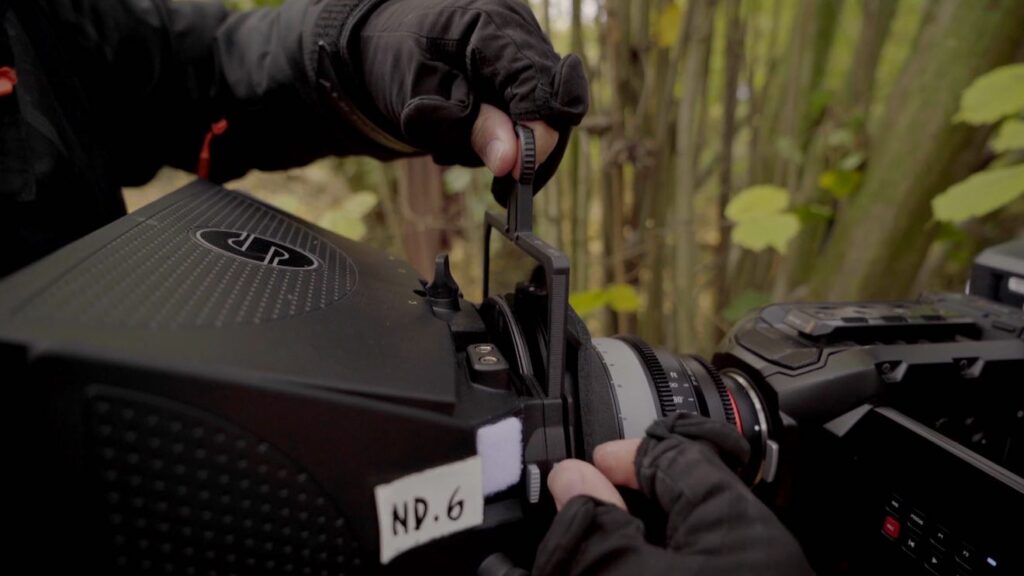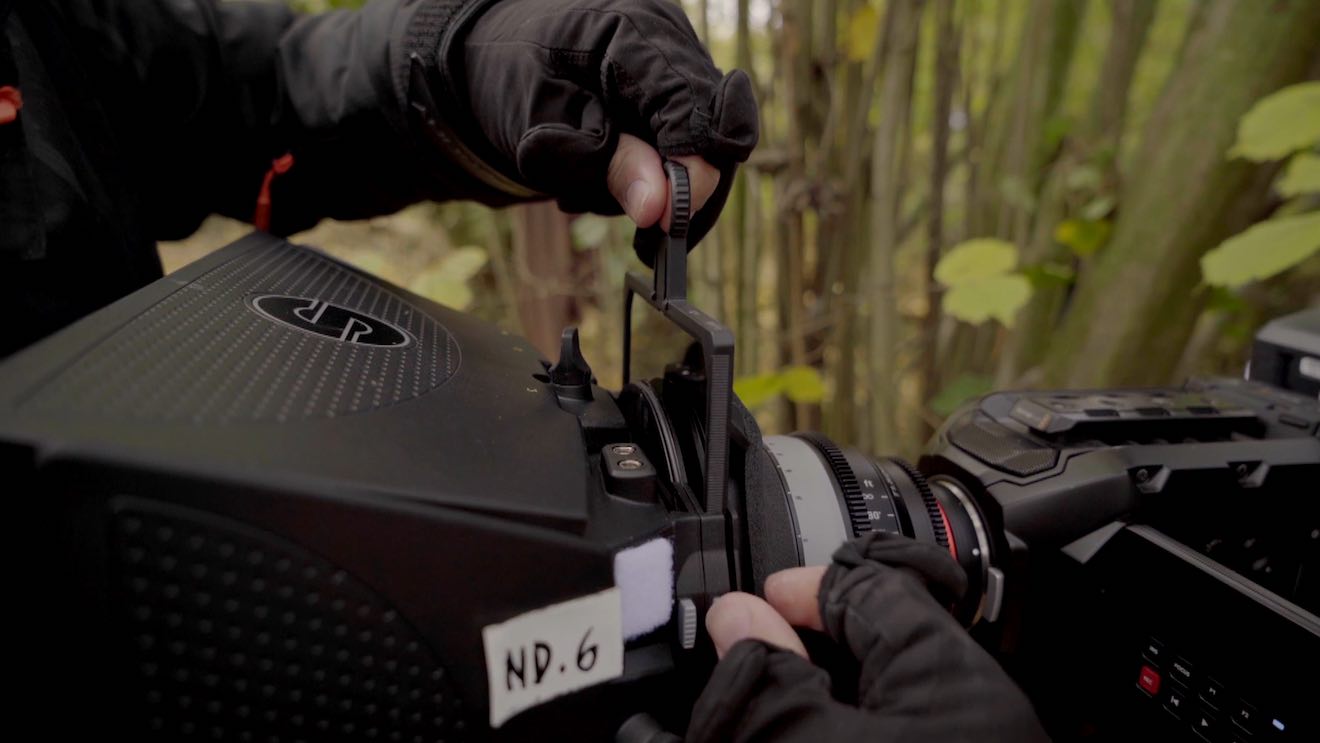
Variable ND Filter and Matte Box: A Comprehensive Guide for Filmmakers
For filmmakers and videographers, achieving the desired exposure and creative effects often requires the use of specialized equipment. Two essential tools in this arsenal are the variable ND filter and the matte box. These devices, while serving different purposes, frequently work in tandem to enhance the quality and control of your footage. This guide provides a comprehensive overview of variable ND filters and matte boxes, exploring their functions, benefits, and how to choose the right ones for your needs.
Understanding Neutral Density (ND) Filters
Before diving into variable ND filters, it’s crucial to understand the basics of neutral density filters. An ND filter is a filter that reduces or modifies the intensity of all wavelengths, or colors, of light equally, giving no changes of hue or color rendition. It can be a colorless (clear) or grey filter and is denoted by the filter factor (the number by which exposure must be increased), or by the optical density (the logarithm of the filter factor).
ND filters are used to:
- Reduce the amount of light entering the lens without affecting the color.
- Allow wider apertures to be used, decreasing depth of field, which helps to isolate the subject from the background.
- Allow slower shutter speeds to be used, which can blur motion (e.g., waterfalls, traffic).
- Reduce the effective ISO of high-speed film (i.e., film with ISO above 400) in bright situations.
What is a Variable ND Filter?
A variable ND filter, also known as a fader ND filter, allows you to adjust the amount of light reduction by rotating the filter. This is typically achieved by using two polarizing filters that are rotated relative to each other. As you rotate the filter, the amount of light blocked changes, giving you a range of ND values in a single filter. This eliminates the need to carry multiple individual ND filters.
Benefits of Using a Variable ND Filter
- Convenience: One filter covers a range of ND values, reducing the need to carry and swap multiple filters.
- Flexibility: Quickly adjust the amount of light reduction without changing filters.
- Cost-Effective: Can be more economical than purchasing multiple fixed ND filters.
Potential Drawbacks
- Image Quality: Lower-quality variable ND filters can introduce color casts or vignetting.
- X-Pattern: At higher ND values, some variable ND filters may exhibit an “X” pattern in the image, where the polarization effect becomes too strong.
- Polarization Effects: Can unintentionally enhance or reduce polarization, which may not always be desired.
Matte Boxes: Functionality and Advantages
A matte box is a device mounted on the front of a camera lens. Its primary function is to block extraneous light from entering the lens, preventing lens flare and improving image contrast. Beyond this, matte boxes often serve as a mounting point for filters, including variable ND filters.
Key Functions of a Matte Box
- Flare Control: Prevents unwanted light from hitting the lens, reducing flare and improving contrast.
- Filter Mounting: Provides a secure and convenient way to mount filters in front of the lens.
- Lens Protection: Offers a degree of physical protection for the front element of the lens.
Benefits of Using a Matte Box
- Improved Image Quality: Reduces flare and increases contrast, resulting in cleaner, more professional-looking footage.
- Versatility: Allows for the use of a variety of filters, including variable ND filters, graduated ND filters, and polarizing filters.
- Professional Look: Adds a professional touch to your camera setup.
Combining Variable ND Filters and Matte Boxes
The combination of a variable ND filter and a matte box offers filmmakers maximum control over their image. The variable ND filter allows for precise adjustment of exposure, while the matte box ensures optimal image quality by minimizing flare and providing a secure mounting point for the filter. [See also: Best ND Filters for Video]
How They Work Together
Typically, the variable ND filter is placed inside the matte box. The matte box then attaches to the front of the lens. This setup allows you to easily adjust the ND value of the filter while ensuring that stray light is blocked from entering the lens. The variable ND filter reduces light, allowing wider apertures or slower shutter speeds, and the matte box maintains image clarity.
Choosing the Right Variable ND Filter
Selecting the appropriate variable ND filter is crucial for achieving the desired results. Consider the following factors:
- Quality of Glass: Opt for filters made from high-quality optical glass to minimize image degradation.
- ND Range: Determine the range of ND values you need. Common ranges include ND2-ND400.
- Filter Size: Ensure the filter size matches the diameter of your lens or the filter slots in your matte box.
- Brand Reputation: Research and choose reputable brands known for producing high-quality filters.
- Customer Reviews: Read reviews from other users to get an idea of the filter’s performance in real-world conditions.
Selecting the Right Matte Box
Choosing the right matte box depends on your camera setup and shooting style. Consider these factors:
- Size and Weight: Consider the size and weight of the matte box, especially if you are shooting handheld.
- Filter Slots: Determine the number of filter slots you need. Most matte boxes have one to three slots.
- Clamp-On vs. Rod-Mounted: Choose between clamp-on matte boxes, which attach directly to the lens, and rod-mounted matte boxes, which attach to support rods.
- Rotating Filter Stage: A rotating filter stage allows you to easily adjust polarizing filters or graduated ND filters.
- Compatibility: Ensure the matte box is compatible with your lenses and camera.
Tips for Using Variable ND Filters and Matte Boxes
Here are some tips to help you get the most out of your variable ND filter and matte box:
- Test Before Shooting: Always test your setup before shooting to ensure that the variable ND filter is not introducing any unwanted color casts or vignetting.
- Use a Lens Hood: Even with a matte box, using a lens hood can provide additional protection against flare.
- Clean Your Filters Regularly: Keep your filters clean to maintain optimal image quality.
- Avoid Extreme ND Values: Be cautious when using very high ND values on variable ND filters, as this can increase the risk of the X-pattern effect.
- Secure Your Setup: Ensure that the matte box and filters are securely mounted to prevent them from falling off during shooting.
Maintenance and Care
Proper maintenance is key to prolonging the life of your variable ND filter and matte box. Always store them in a protective case when not in use. Clean the filter surfaces with a microfiber cloth and lens cleaning solution to remove dust and fingerprints. Regularly inspect the matte box for any loose parts or damage, and tighten screws as needed.
Real-World Applications
Consider a scenario where you’re shooting a landscape video in bright sunlight. Without a variable ND filter, you’d be forced to use a fast shutter speed and a narrow aperture to avoid overexposure. This would result in a deep depth of field, with everything in the scene appearing sharp. By using a variable ND filter, you can reduce the amount of light entering the lens, allowing you to use a wider aperture to create a shallow depth of field, blurring the background and drawing attention to your subject. The matte box ensures that no stray light interferes with the image, maintaining clarity and contrast. [See also: Matte Box vs Lens Hood]
Another common use is in filmmaking. Imagine you’re filming a scene outdoors and want to maintain a consistent exposure as the sun moves in and out of clouds. A variable ND filter allows you to quickly adjust the amount of light reduction without having to stop and change filters. The matte box ensures that the filters are securely mounted and that no stray light affects the shot. The variable ND filter is essential here for maintaining smooth transitions and consistent image quality.
Conclusion
The variable ND filter and matte box are invaluable tools for filmmakers and videographers seeking precise control over exposure and image quality. While the variable ND filter offers flexibility in adjusting light reduction, the matte box ensures optimal image clarity by minimizing flare and providing a secure filter mounting solution. By understanding their functions, benefits, and limitations, you can make informed decisions when choosing and using these essential pieces of equipment. Investing in high-quality variable ND filters and matte boxes can significantly enhance the quality and professionalism of your work. Remember to always test your setup, maintain your equipment, and explore the creative possibilities that these tools offer. Whether you are shooting landscapes, portraits, or cinematic scenes, the combination of a variable ND filter and a matte box will empower you to capture stunning visuals with greater control and precision. This combination provides filmmakers unparalleled control over their image, allowing them to achieve the desired look and feel, regardless of the lighting conditions.

